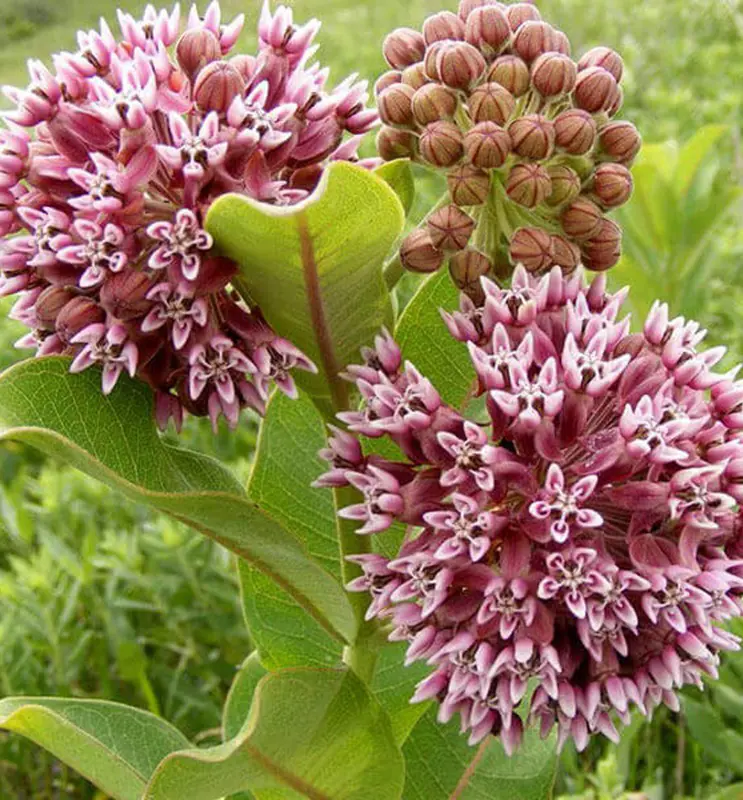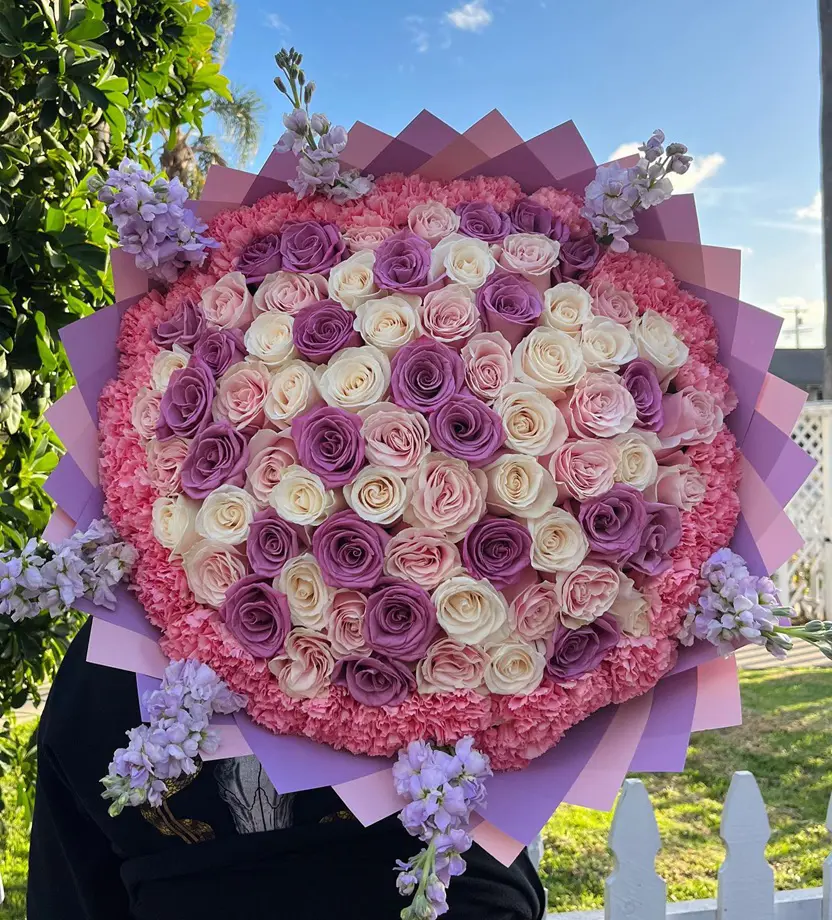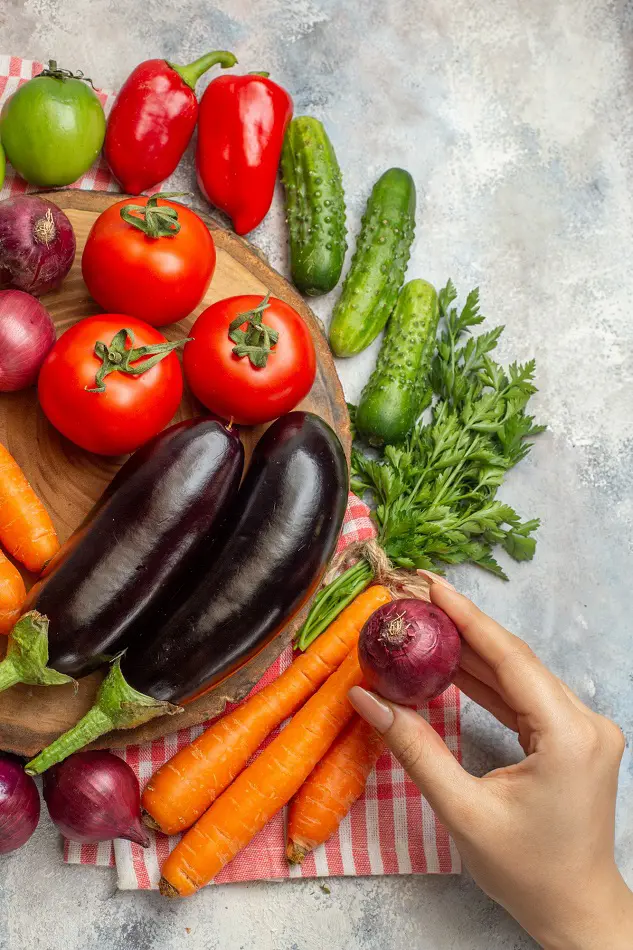20 Easiest Vegetables To Grow In Pots
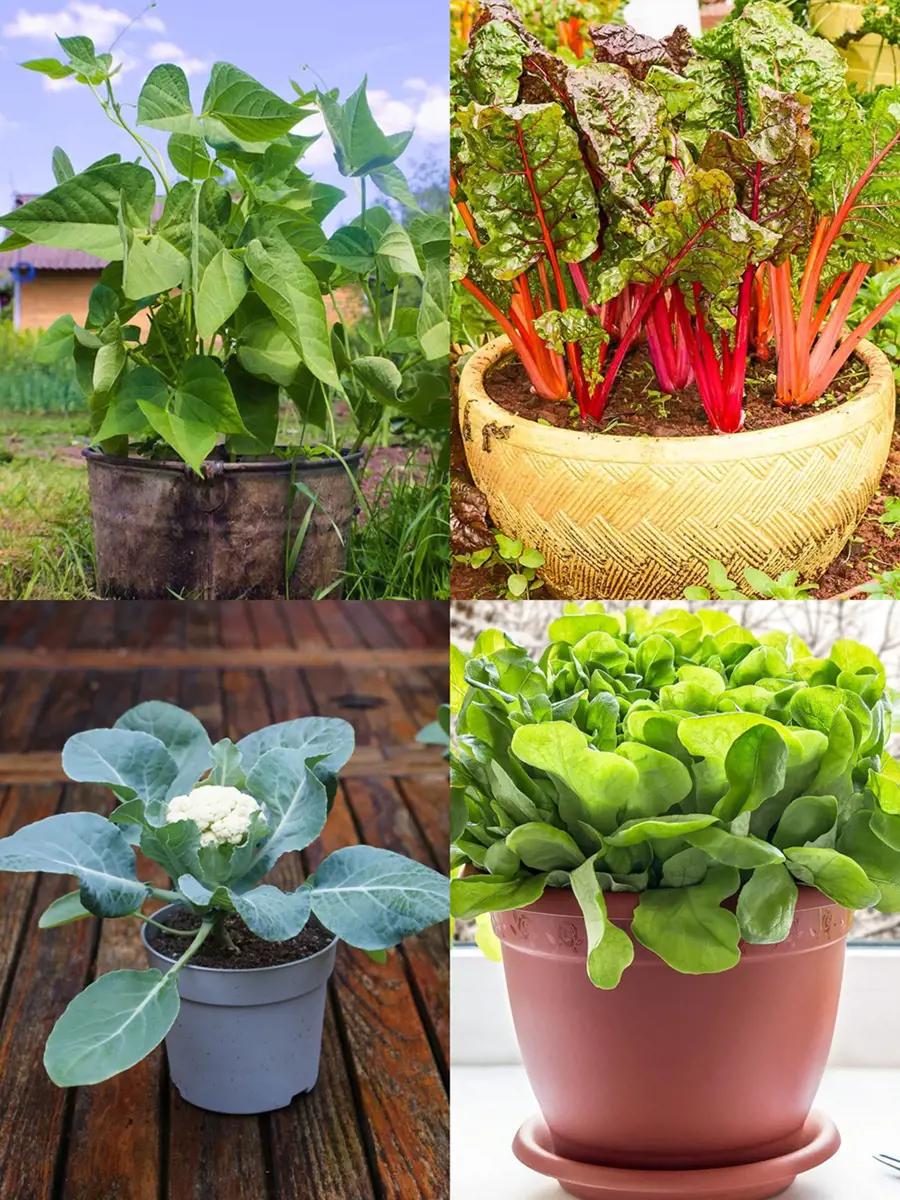
This post may contain affiliate links. If you make a purchase through links on our site, we may earn a commission.
Growing vegetables in pots is a convenient and accessible way to bring the joys of gardening to even the smallest of spaces.
Whether you have a sunny balcony or a cozy patio, cultivating your vegetables can be both rewarding and delicious. However, if you are new to gardening or simply prefer low-maintenance plants, it's important to choose the right vegetables for your pots.
In this article, we will explore some of the easiest vegetables to grow in pots, allowing you to enjoy the bounties of a homegrown harvest with minimal effort.
1. Green Onions
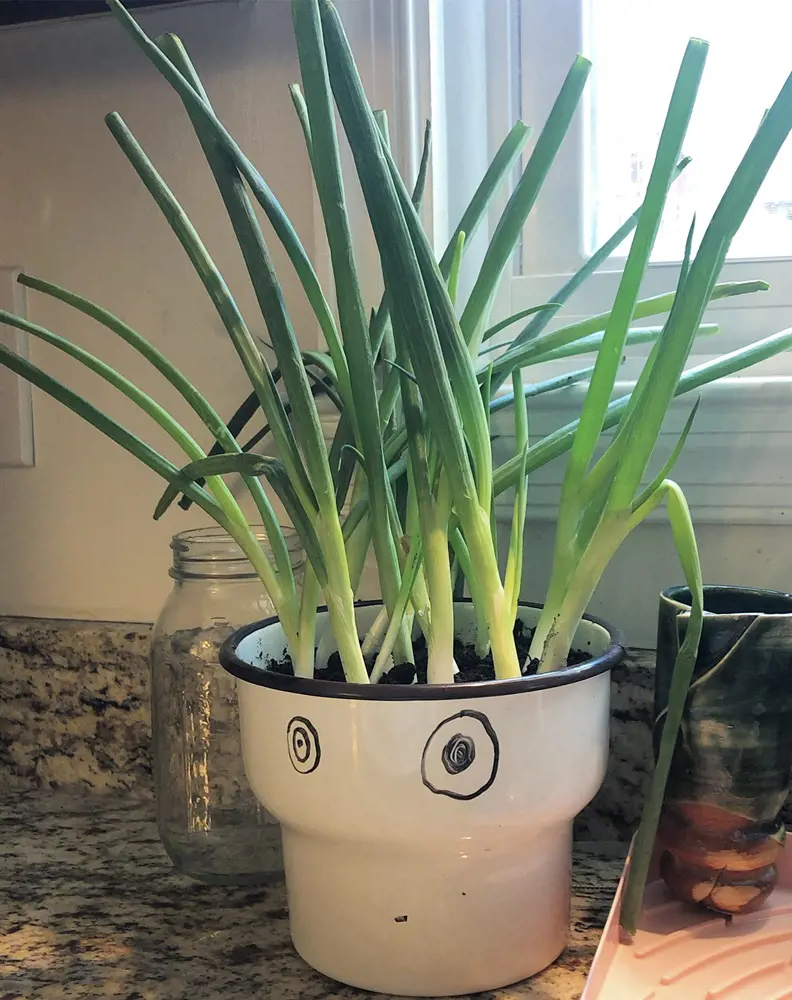
Green onions, also known as scallions or spring onions, are an excellent vegetable to grow in pots for various reasons. Firstly, their compact size makes them perfect for container gardening, allowing even those with limited space to enjoy homegrown produce.
Secondly, green onions have a relatively quick growing cycle, typically ready for harvest in just a few weeks. Moreover, they require minimal maintenance and are highly adaptable to different climates and conditions. Their versatile and mild flavor adds a fresh and aromatic touch to a wide range of dishes, making them a popular choice for any home garden.
2. Peppers

Peppers are an excellent vegetable for pot planting due to their compact size and versatility. When sowing, start seeds indoors 8-10 weeks before the last frost date. Use a pot or container that is at least 12 inches in diameter to accommodate the plant's root system.
Ensure good drainage by adding gravel or sand to the bottom of the pot. Peppers require full sun exposure and a warm climate, with temperatures between 70-85°F during the day and 60-70°F at night. Regular watering, well-draining soil, and occasional fertilization will keep them healthy and productive.
3. Tomatoes

Tomatoes are an excellent choice for pot planting due to their versatility and ease of cultivation. To sow tomatoes, start by germinating seeds indoors and transplanting them once they reach 6-8 inches in height. A 5-gallon pot is sufficient for one tomato plant, ensuring good drainage.
Regular watering and fertilizing, along with providing support for the plant, are crucial for healthy growth. Tomatoes thrive in warm climates with temperatures ranging between 70-85°F, making them perfect for pot planting in sunny areas or greenhouses.
4. Eggplant

Eggplant, also known as aubergine, is a fantastic vegetable for plot planting. It thrives in warm climates with temperatures around 70-85°F (21-29°C). To ensure its growth, a pot size of at least 5 gallons is recommended for each plant. Eggplant can be planted by sowing seeds indoors 8-10 weeks before the last frost, then the pots can be placed outside once the temperature reaches 60°F (15°C).
Regular watering and well-drained soil are essential for its care routine. Additionally, eggplant requires full sun exposure for at least six hours a day to produce a bountiful harvest. With proper care, this versatile vegetable can be a rewarding addition to any plot garden.
5. Lettuce
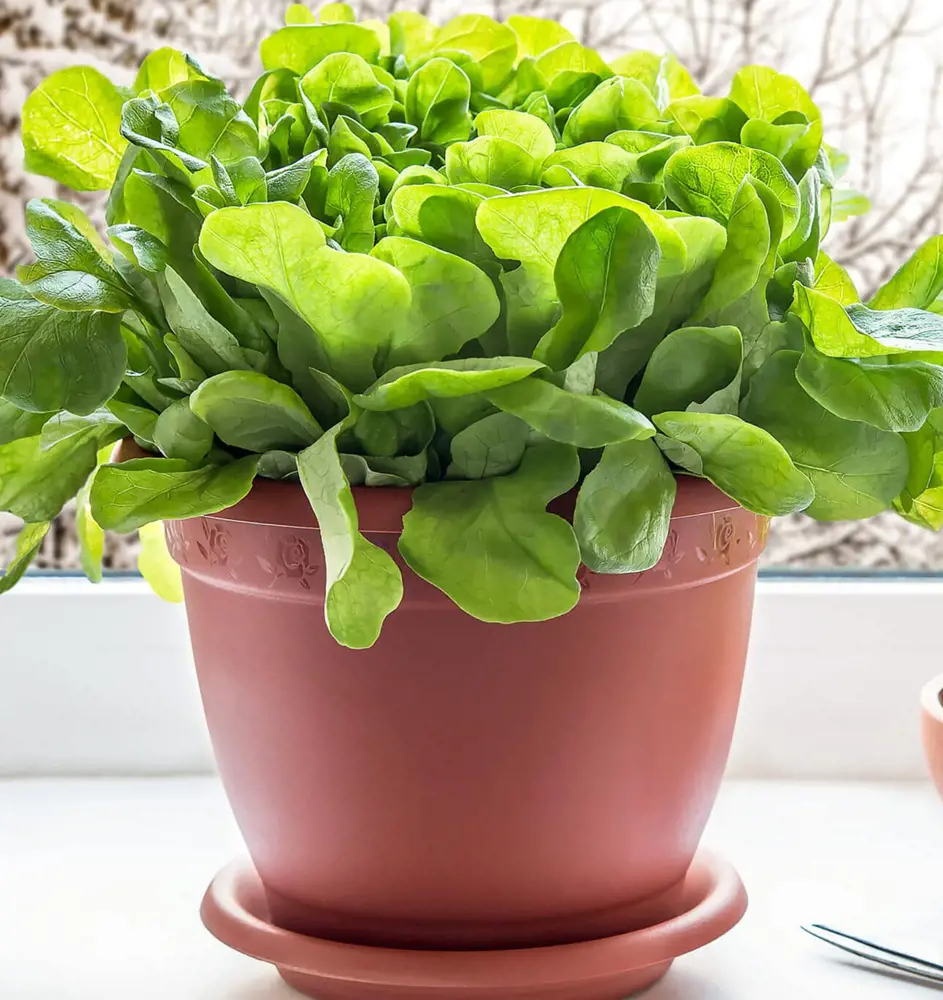
Lettuce is an excellent vegetable to plant in pots as it has a shallow root system, making it well-suited for container gardening. Planting lettuce in pots requires sowing the seeds directly into the soil, keeping them moist until germination occurs.
Regular watering is crucial to prevent the soil from drying out. Lettuce prefers cooler temperatures, ideally between 45-75°F (7-24°C), making it suitable for spring and fall planting. Choosing a pot size that allows for at least 6 inches of soil depth is recommended to accommodate the lettuce roots and promote healthy growth.
6. Spinach
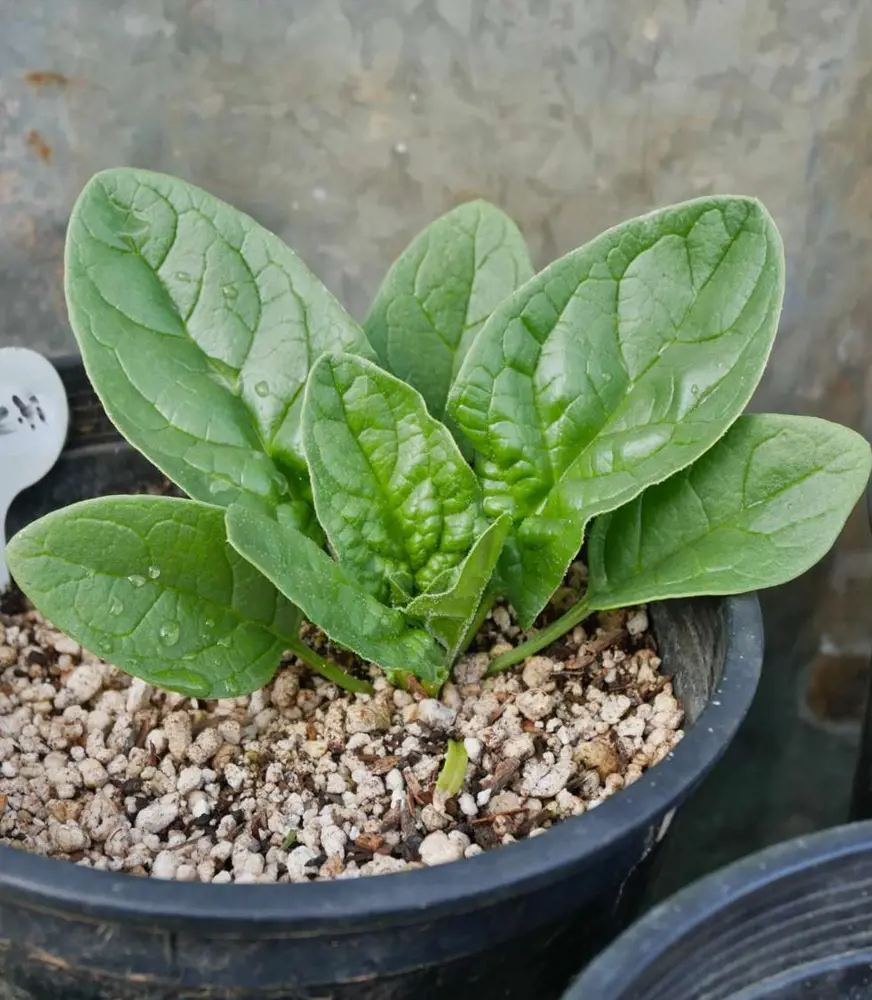
Spinach is an excellent vegetable for pot planting due to its compact size and fast growth. To sow spinach, prepare a pot or container that is at least 6 inches deep and has drainage holes. Sow the seeds directly into the pot, spacing them about 2 inches apart.
Spinach prefers cooler temperatures, so it's best to plant it in early spring or late summer. Place the pot in a location that receives partial shade to prevent the plants from bolting. Regular watering and a balanced fertilizer will ensure healthy growth.
7. Bok Choy
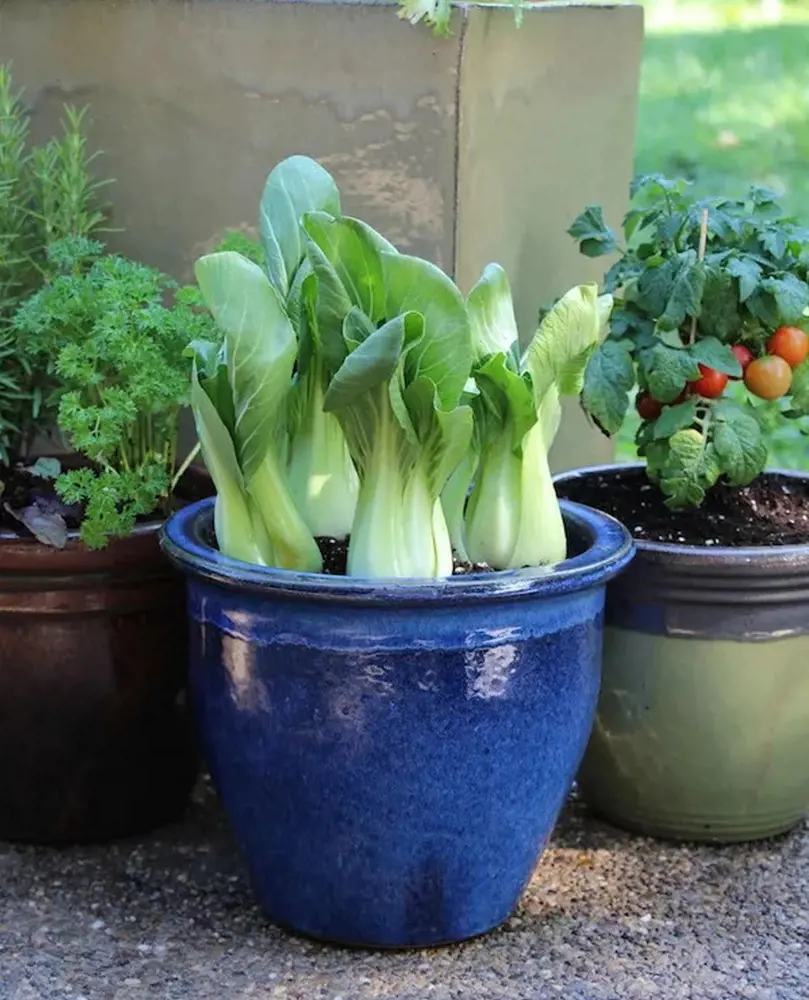
Bok Choy is a great vegetable to plant in pots as it has a compact size, making it suitable for small spaces like pots. Planting techniques involve sowing seeds directly into well-drained soil, with a depth of about 1 inch. It requires regular watering, ensuring that the soil remains moist but not waterlogged.
Bok Choy prefers cooler temperatures, with an ideal climate range of 50-75°F. Therefore, it is perfect for growing in pots indoors or in cooler climates. A pot size of at least 6-8 inches in diameter is recommended to accommodate the plant's growth.
8. Garlic
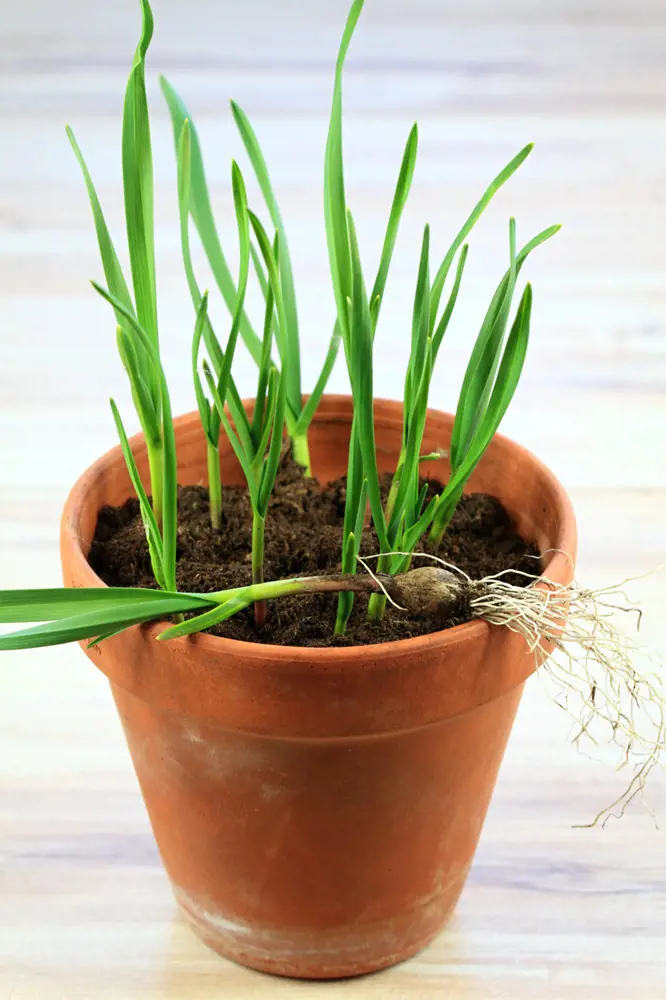
Garlic is another great vegetable for plot planting. It requires a pot size of at least 8-10 inches deep and wide to accommodate its bulb. To plant garlic, separate the cloves and plant them pointed end up, about 2 inches deep and 6 inches apart.
It requires well-drained soil and regular watering, especially during dry spells. It prefers full sun and can tolerate a wide range of temperatures, from cool winters to hot summers. A cold period of 6-8 weeks is necessary for bulb development. Garlic is relatively low maintenance, making it an ideal choice for plot planting.
9. Onions
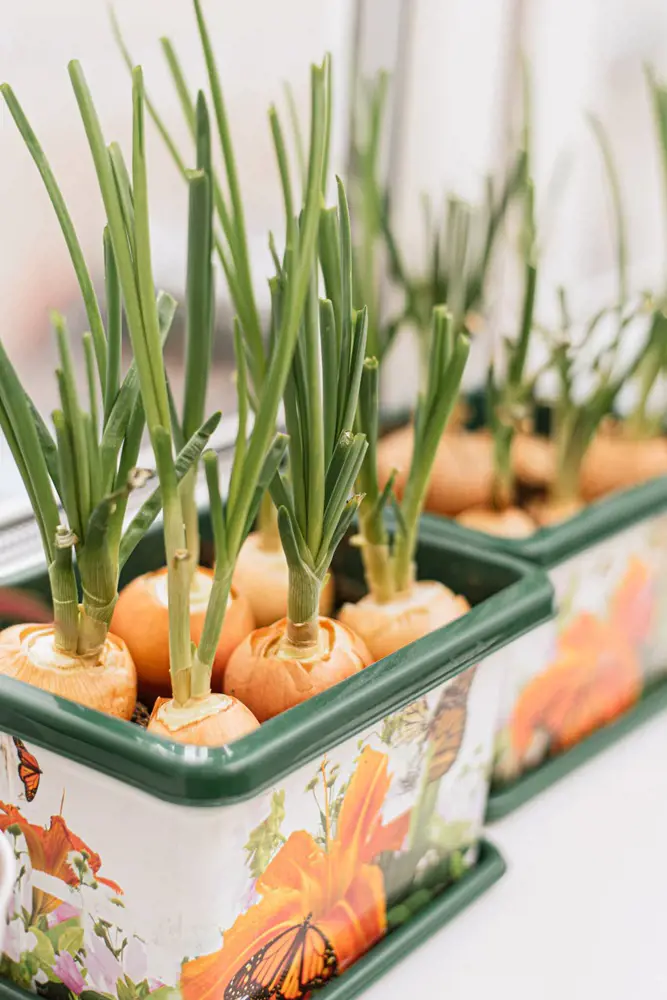
Onions are an excellent choice for pot planting due to their compact size and minimal space requirements. To sow onions, start by filling a pot or container with well-draining soil. The container should be at least 6 inches deep to accommodate their roots.
Sow the onion seeds directly into the pot, about 1 inch apart, and cover lightly with soil. Onions thrive in full sun, so place the pot in a sunny spot. Water the onions regularly, ensuring the soil remains moist but not waterlogged. Onions prefer cooler temperatures, so a moderate climate with temperatures between 50-75°F is ideal for their growth.
10. Asparagus
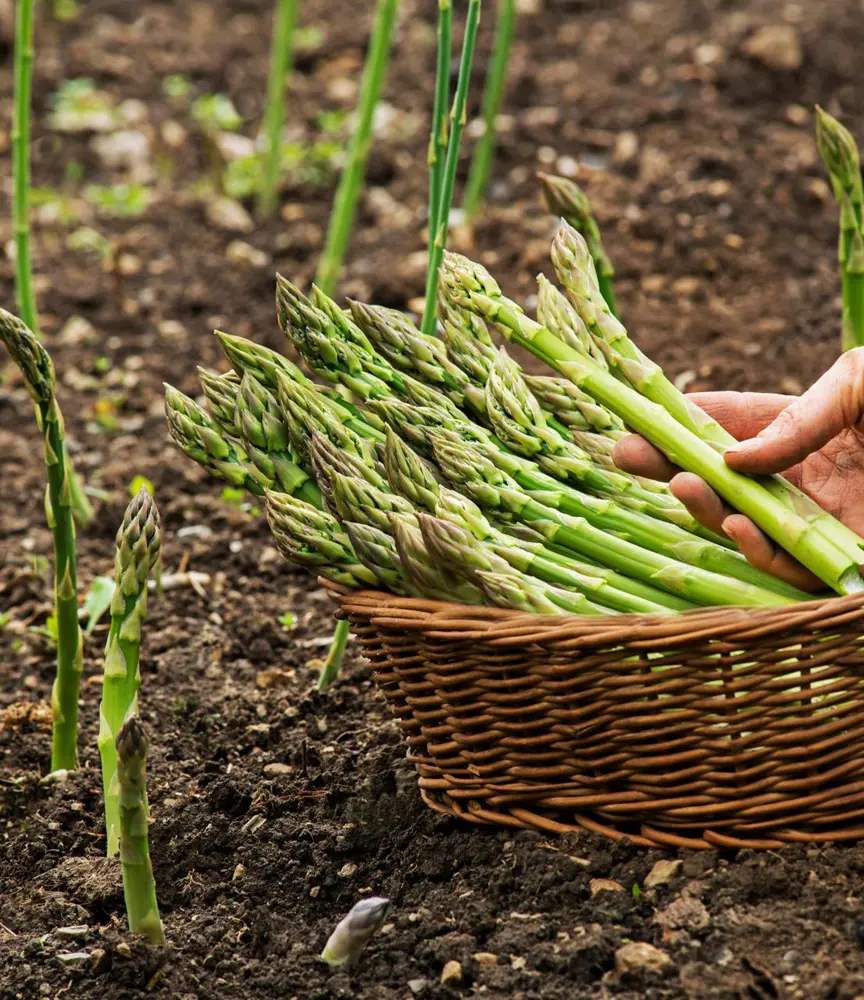
Asparagus is an excellent vegetable for plot planting. It requires a large pot size, typically around 18-24 inches in diameter and depth, to accommodate its deep root system. The method of planting involves creating trenches around 6-8 inches deep and spacing the crowns around 12-18 inches apart. Asparagus plants need well-drained soil and regular watering to keep the soil consistently moist.
They also benefit from a layer of mulch to retain moisture and suppress weed growth. Asparagus thrives in temperate climates with a cool winter period and moderate summer temperatures, ideally between 70-85°F (21-29°C). It requires full sun exposure for at least 6-8 hours a day. With proper care and maintenance, asparagus can provide a bountiful harvest for years to come.
11. Chard

Chard is a great vegetable to plant in pots for several reasons. It has shallow roots, making it ideal for container gardening. Plant chard seeds about 1 inch deep in well-draining soil and ensure the pot has adequate drainage holes. Chard requires regular watering to keep the soil evenly moist, but not waterlogged.
It prefers cooler temperatures, around 50-75°F (10-24°C), and thrives in full sun to partial shade. A pot size of at least 12 inches in diameter is recommended to allow the plant to grow and develop properly. Overall, chard is a versatile and easy-to-grow vegetable that can be successfully cultivated in pots.
12. Carrots

Carrots are an excellent choice for pot planting due to their compact size and ability to thrive in containers. To sow carrots, choose a pot or container with a depth of at least 12 inches and ensure it has good drainage. Sow the seeds about half an inch deep and keep the soil consistently moist.
Carrots prefer cool climates with temperatures ranging between 55-75°F. Regularly thin out the seedlings to allow proper growth, and provide them with at least 6 hours of sunlight daily. With proper care, you can enjoy a bountiful harvest of fresh and delicious carrots.
13. Beets

Beets make a great addition to your container garden as it is suited for plot planting due to their adaptability and ease of cultivation. They require a pot size of at least 8-10 inches deep to accommodate their taproots. Planting is typically done by sowing seeds directly into well-drained soil, about 1 inch deep and 2-4 inches apart.
Regular watering is necessary to keep the soil evenly moist, but overwatering should be avoided to prevent rot. Beets thrive in cooler climates with temperatures ranging between 50-75°F (10-24°C). Adequate sunlight is crucial, with at least 6 hours of direct or partial sun per day. With proper care, beets can provide a bountiful harvest in about 55-70 days.
14. Potatoes
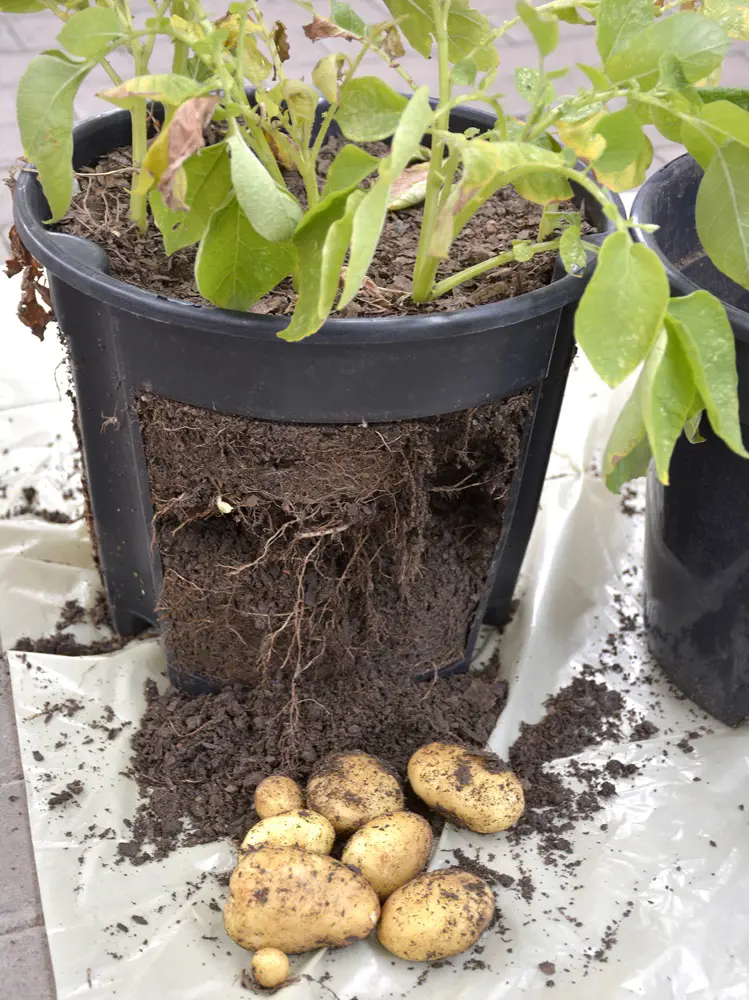
Potatoes are an excellent choice for pot planting due to their versatility and high-yield potential. To sow potatoes, select a container that is at least 12 inches deep and wide, with good drainage holes, moreover, specialized pots for potatoes are also available for an easier harvest later on. Fill it with a well-draining potting mix and plant potato seeds or seed potatoes about 4-6 inches deep.
Regularly water the container, ensuring the soil remains moist but not waterlogged. Potatoes thrive in cool climates, with temperatures ranging between 45-85°F. Protect them from frost and provide ample sunlight. Harvest when the foliage turns yellow and dies back.
15. Broccoli
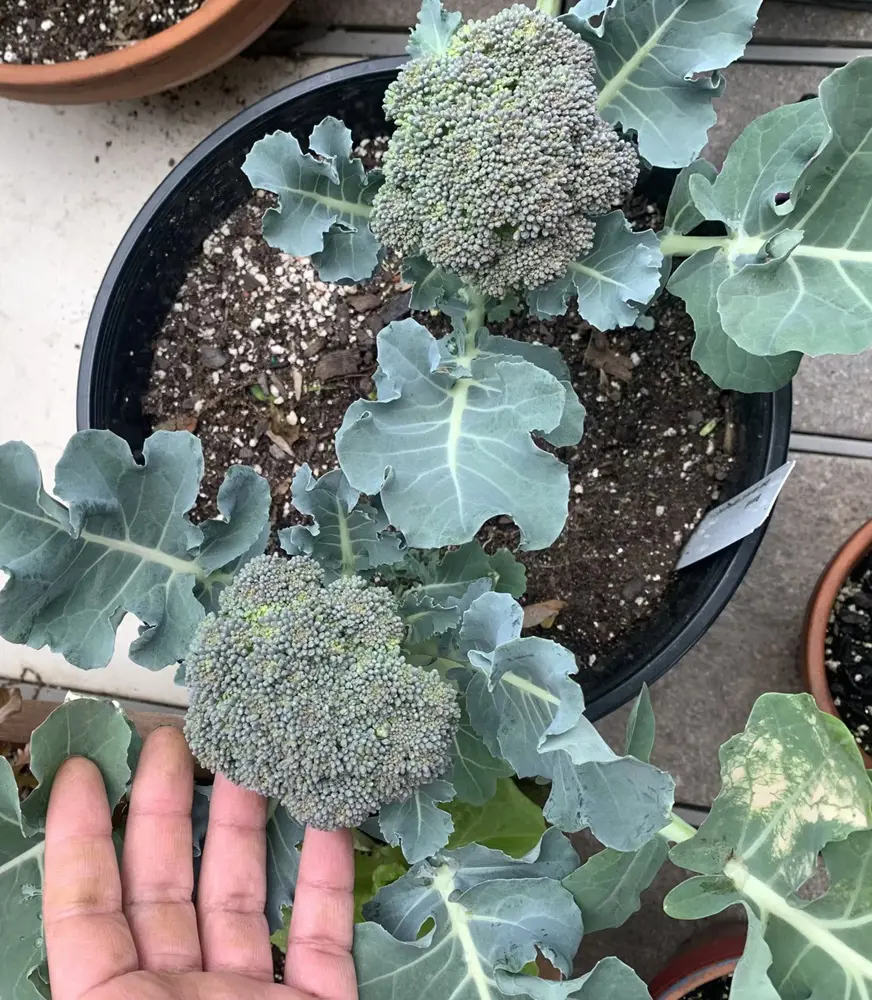
Broccoli requires a pot size of at least 12 inches deep and wide to accommodate its root system. The method of planting involves sowing broccoli seeds directly into well-drained soil, spacing them about 18 inches apart. It is important to provide regular watering, ensuring the soil remains consistently moist but not waterlogged.
Broccoli prefers cooler climates with temperatures ranging from 60 to 70°F (15 to 21°C), making it suitable for spring and fall planting in most regions. It thrives in full sun but can tolerate partial shade. Regular fertilization and protection against pests and diseases are also essential for successful growth.
16. Cauliflower
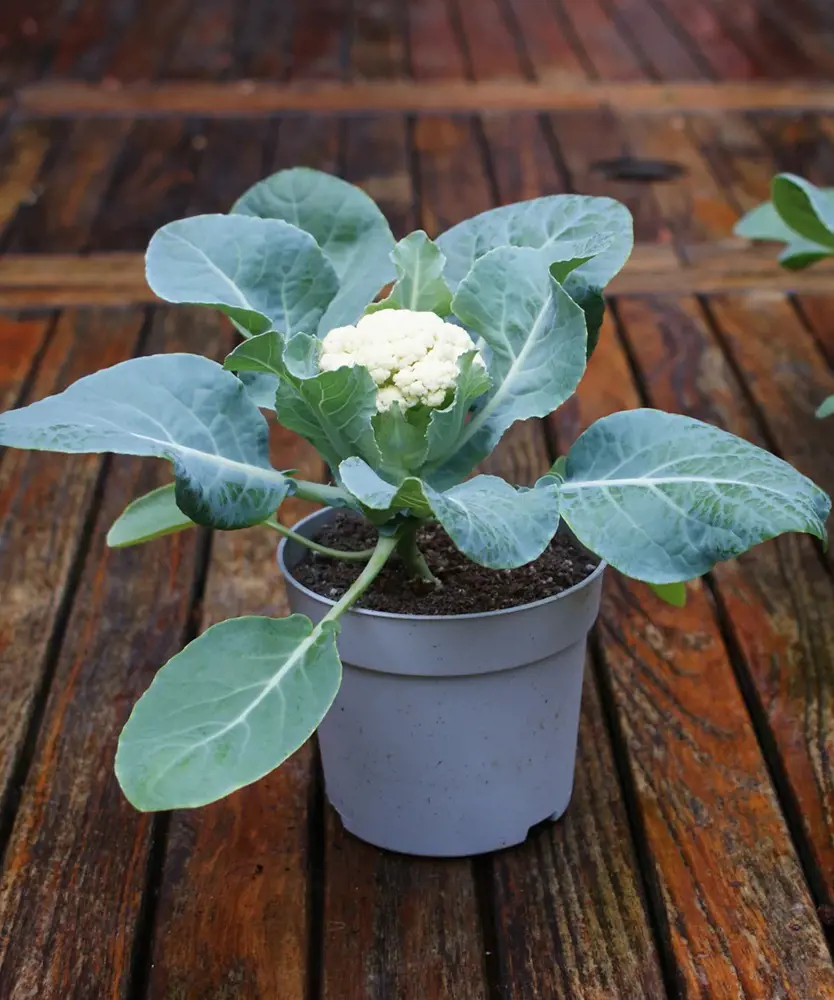
Cauliflower is a good vegetable to plant in pots because it has a compact growth habit, making it suitable for container gardening. Planting techniques involve sowing seeds directly into a pot filled with well-draining soil. Cauliflower requires regular watering and fertilization to ensure healthy growth.
It prefers cooler temperatures between 60-70°F (15-21°C) and requires full sun or partial shade. A pot size of at least 12 inches in diameter is recommended to provide enough space for the cauliflower plant to develop a strong root system and produce a good-sized head.
17. Kale
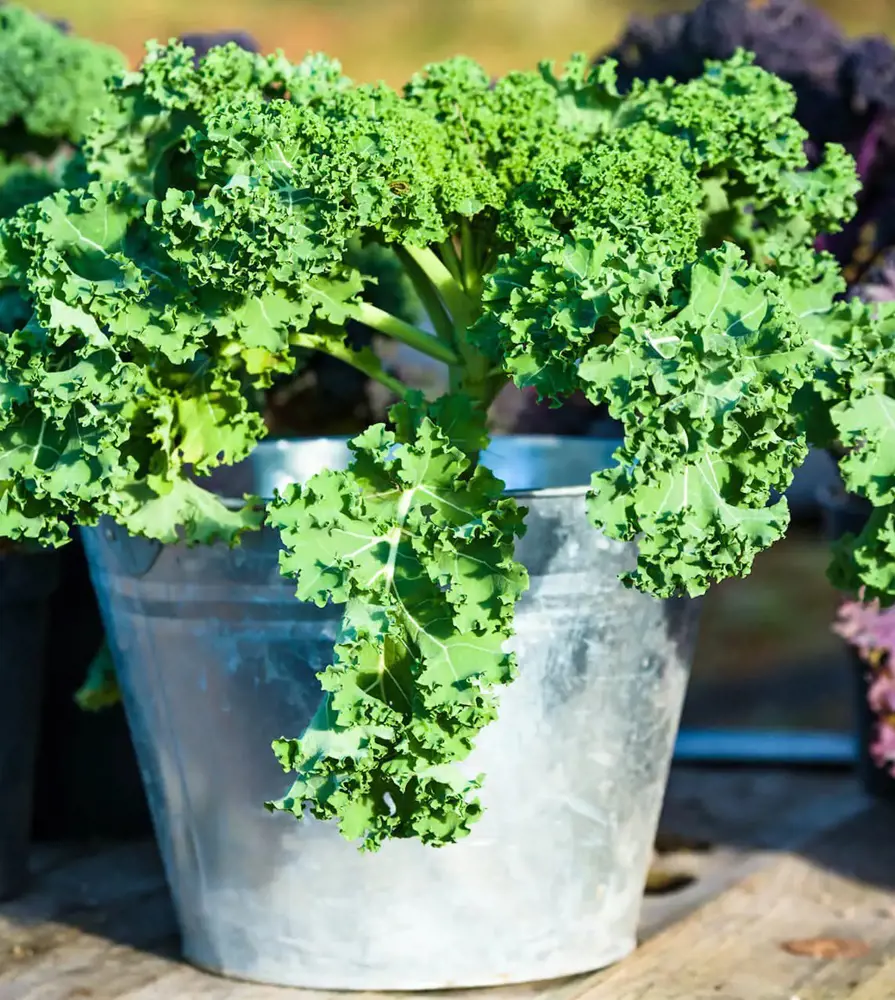
Kale has a compact growth habit and hardiness making it an excellent vegetable for pot planting. To sow kale, start by planting seeds in a pot or container with a depth of at least 12 inches and a diameter of 18 inches. Ensure the pot has good drainage.
Kale requires well-drained soil and regular watering to keep the soil moist but not waterlogged. It thrives in cool climates with temperatures ranging from 60-70°F. Provide partial shade during hot summer months to prevent bolting.
18. Radishes

Radishes are an excellent vegetable to plant in pots due to their compact size and quick growing cycle. When planting radishes in pots, it is important to choose a pot with a diameter of at least 6 inches to allow enough space for the roots to grow. Sow the seeds directly into well-drained soil, keeping them about 1 inch apart.
Radishes prefer cooler temperatures, with an ideal temperature range between 50°F and 70°F. They require consistent moisture, so it is important to water them regularly, ensuring the soil remains moist but not waterlogged. With proper care and attention, radishes can be grown successfully in pots, making them a great choice for container gardening.
19. Sweet Peas

Sweet peas have vibrant colors, delightful fragrances, and also sweet vegetables making them an excellent choice for plot planting that adds a touch of color pop to your garden. They thrive in well-drained soil and require a pot size of at least 12 inches in diameter to accommodate their deep root system.
Plant the seeds about 2 inches deep and 4 inches apart, providing support for their climbing tendrils. Sweet peas need regular watering and benefit from a layer of mulch to retain moisture. They prefer cooler climates with temperatures ranging from 50 to 75 degrees Fahrenheit, making them ideal for spring or fall planting.
20. Beans

Beans with their relatively small root system make an excellent choice for plot planting. Planting techniques involve sowing the seeds directly into the pot, ensuring they are spaced adequately apart.
Regular watering is essential to keep the soil moist, and the pots should have proper drainage to prevent waterlogging. Beans thrive in temperatures between 60-85°F (15-29°C) and prefer a sunny location. The pot size should be at least 12 inches (30 cm) deep to accommodate the root system and allow for adequate growth and support.
Recent posts
Gardening
Gardening
How To Grow Grass From Seed? Planting And Caring Guide
Growing grass seems like an easy task. But the ones who are already into it know how much work and patience is required for its maintenance, to transform the outdoor space into a lush, green oasis. For beginners who are starting from scratch or someo...
Gardening
How To Grow, Plant And Care Milkweed From Seed
Planting milkweed from seed is one of the most satisfactory practices. It not only adds value to your garden aesthetics but also contributes essential instinct pollinators, including monarch butterflies. Many milkweed seeds germinate best when expos...
Gardening
18 Rose Colors And Their Meanings
Roses are not only elegant flowers but they also represent something more profound. Every color of a rose has its special meaning, making it a powerful tool when it comes to conveying messages in personal relationships and occasions. Ranging fr...
Gardening
When To Plant Vegetables – A Month By Month Calendar
Understanding when to plant vegetables is essential to successful gardening as timing alone can greatly affect the productivity and health of vegetables. A month-by-month planting calendar is useful because not every month is ideal for a specific pro...
Gardening
How To Prune Hydrangeas So That It Stays Healthy
The name hydrangea conjures clusters of flowers packed densely. Hydrangeas can grow in both old and old wood, and depending on the varieties, pruning time may differ. Pruning hydrangeas is a fundamental practice for gardeners wanting to maintain thei...
Gardening
How To Prune Roses With These 10 Steps
Pruning these thorn-filled plants might seem scary, but it's crucial for having abundant rose blooms. Cutting back old growth encourages new, vibrant growth, removes dead parts, and shapes the plant. This practice also reduces the risk of fungal dise...

